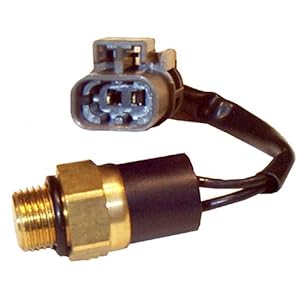I've always been curious :ummm:about this manual switch/replacement thermo switch issue. Not about what works the best, but about WHY either is needed in the first place!
Obviously, these mods originally came about because of owner's concerns about the needle position on the temperature gauge. Sometimes close to, or in the red zone.
However - has anyone actually measured the coolant temp, and how it relates to needle position? More importantly, if the engines tend to run "hot" at times, because of thermo switch settings, fan size, whatever.........why didn't Yamaha Motor Corporation make their own factory modification, after the bikes had been on the market awhile(say '86-'88)?? Seems to me that this would be a very inexpensive change for them to make, would cut in very little to their profit margin. My guess - only a guess - is that Yamaha considered even the maximum coolant temperatures encountered to be within acceptable limits for this model of engine. Let the debate (civil , of course) begin!
Cheers!
p.s., by the way - I installed a manual switch years ago. Didn't like the looks of that temperature gauge sometimes............





